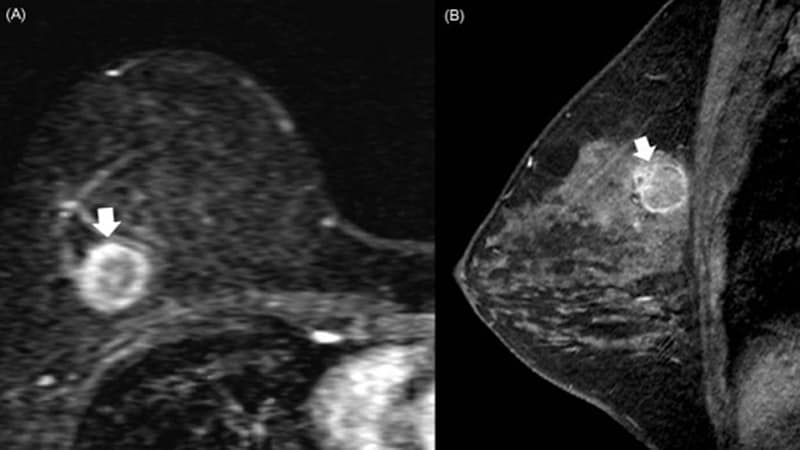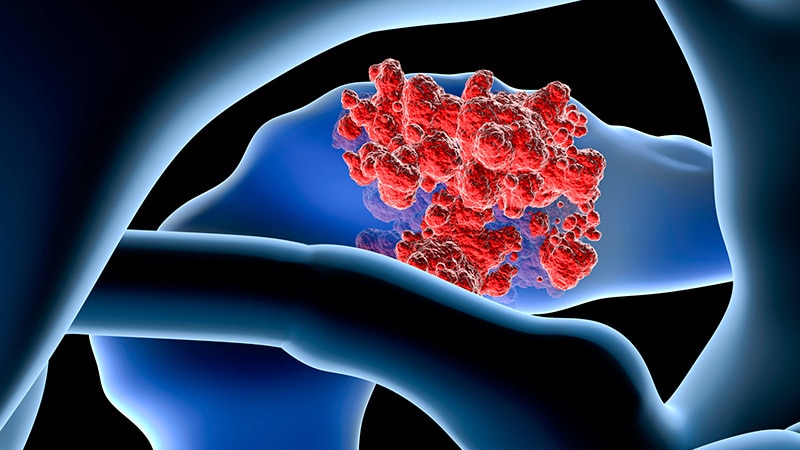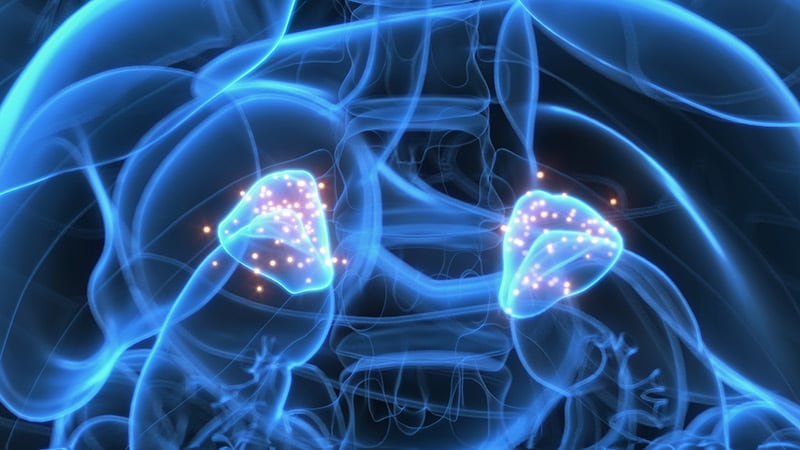This transcript has been edited for clarity.
Ileana L. Piña, MD, MPH: This is Ileana Piña. I am a professor of medicine and the chair of quality for Thomas Jefferson University in the Division of Cardiology.
My love is heart failure. For years, I have been very worried about how patients are experiencing their disease. You may have the same ejection fraction, you may have the same NT-proBNP, but everyone experiences it differently. It's always been my experience that women have a lower health status than men with exactly the same clinical parameters, something that we don't really critically understand.
I'm very happy to have with me today Dr Sandhu from Stanford. His trial has to do with probably the most commonly used health outcome measure that we have today. That is PRO, which stands for patient-reported outcomes, captured via the Kansas City Cardiomyopathy Questionnaire (KCCQ). The KCCQ has been around since the mid-1990s. Even the FDA has approved the KCCQ and the Minnesota Living With Heart Failure Questionnaire for presentations to the Center for Devices and Radiological Health.
I want to welcome you here today, Alex Sandhu. Tell me about the trial that you're presenting at the ACC. What is the name of it and why did you do it?
The PRO HF Trial
Alexander T. Sandhu, MD, MS: Thank you so much for having me. I'm really excited to be here to present the Patient-Reported Outcomes in Heart Failure Clinic (PRO-HF) trial. The rationale behind PRO-HF is that we've known for a while, as you mentioned, that patient reports of their health status using validated structured PROs are often quite discordant with how clinicians capture patient health status using the New York Heart Association (NYHA) class. PROs are also probably better predictors of patient outcomes than is NYHA class.
Based on that, the 2022 heart failure guidelines, for the first time, included a class 2a recommendation to start capturing this as part of care. There are no randomized data to help us understand what capturing the data ends up doing in terms of whether it changes how clinicians treat their patients or if it ends up changing clinical outcomes. That's what we aimed to assess in the PRO-HF trial.
In the PRO-HF trial, we randomized 1248 participants.
Piña: That's a good number.
Sandhu: It was across about 5500 eligible participants seen in the Stanford Heart Failure Clinic.
Piña: How long did it take?
Sandhu: It took just under 1 year of enrollment.
Piña: Wow. For that large a number of patients.
Sandhu: We used a very pragmatic enrollment approach, taking people right before their clinic visit and reaching out to them via email, telephone, and then phone call. We found that a large number of participants were willing to participate. Then we randomized them to either routine PRO assessment or usual care. With routine PRO assessment, they completed the KCCQ-12 questionnaire before each of their clinic visits over the subsequent year.
Piña: All of their visits?
Sandhu: All of their visits to the heart failure clinic. Those results were visible to the treating clinician in three different ways. One is that the clinicians were all taught that they could add a dot phrase to their notes, and their notes would self-populate with both the question responses as well as the KCCQ scores over time. There were Epic summary tables and graphs where the clinician could review the results, and before the first visit, we handed the clinicians a paper readout with the results.
Piña: In person?
Sandhu: Yes, in person.
Piña: Who did that?
Sandhu: We had the clinic receptionist print them out and add them to the vitals sheet that the clinician got at the time of that visit.
Piña: Even if it's a patient that you don't know and that you've never seen before, they would get the sheet.
Sandhu: Yes. All of this was happening around the time of the pandemic, so there was a nontrivial number of virtual visits. For those, we would securely email the results to the clinician before the visit.
Piña: They would have it by the time that they had the teleconference. Was there much teleconferencing during that time?
Sandhu: There was a substantial amount initially that reduced over time. Somewhere around one quarter of the visits were via televisit initially. In the usual-care arm, we completed a baseline KCCQ-12 and another one at 1 year. Those results were not visible to the treating clinician.
Piña: The study team saw the results?
Sandhu: The study team recorded those, yes.
Piña: When you say KCCQ, which one? Is it the standard one that takes 8 minutes to fill out?
Sandhu: No. We used the abbreviated KCCQ-12, so it abbreviates the full 23-question version to 12 questions to try to make it something that's more manageable to complete at every single visit.
Piña: There is the functional score. There's a total score. What are the scores in this abbreviated KCCQ-12?
Sandhu: The 12-question PRO captures patients' physical limitations, symptom frequency, quality of life, and social limitations related to heart failure. From that, you get four domain scores that, as you know, range from 0 to 100, with 100 meaning very high health status — perfect — and zero indicating very poor health status. Then they average for the overall summary score.
Piña: The overall summary score that you would present would be the average of all those four pieces.
Sandhu: Yes. We would give clinicians the individual responses to each question and then we would give them the patient's domain scores and the overall summary score.
Piña: How do those scores compare with the regular 23 questions? Is 40 on the full version still 40 on the KCCQ-12?
Sandhu: Yes. Dr Spertus and his team had done some earlier validation work that showed that there was a pretty close correlation between the scores.
Piña: You didn't have to learn a new scale.
Sandhu: No. It's pretty similar. Conventional threshold scores of somewhere over 80 are consistent with NYHA class I, scores of 60-80 for class II, and scores of less than 60 are consistent with class III or class IV.
Piña: Good. Keep going. That's very interesting.
High QOL to Start With
Sandhu: The results that we presented previously at AHA described how we assessed clinicians' understanding of their patients' health status. We compared the accuracy of clinician assessment of health status when they had the KCCQ-12 or they didn't. We also surveyed patients to see how they felt about their clinicians' understanding of their health status.
Piña: That's an interesting question.
Sandhu: That's what we presented previously at AHA. Today, we were able to present the 1-year results where we compared the clinical outcomes, with the primary outcome being the KCCQ-12 in both arms, and secondary outcomes related to the individual domains of the KCCQ-12: medical treatment rates, testing rates, clinic frequency, and hospitalizations.
Piña: The blinding continued for the full year for the group that got randomized to not seeing them?
Sandhu: Yes. The usual-care arm didn't complete repeat KCCQ-12s until 1 year, and their clinicians never got to view them until after that 1-year endpoint.
Piña: True blinding. What did you find?
Sandhu: We presented that there was no significant difference in the KCCQ-12 at 1 year. Overall, there was also no significant difference in our prespecified subgroup analyses. There was very little and no statistically significant difference in medication rates, testing rates, clinic visit frequency, or hospitalizations.
We did do a couple of other informative — I think — post hoc exploratory analyses. One of them was stratifying patients based on their baseline KCCQ-12. This was a relatively less symptomatic cohort than most heart failure cohorts. Our median KCCQ-12 score was 82.
Piña: The medians in our clinics are 40s and 50s, which is where the patients live. The 80s are a little high. What do you attribute that to, that it's not comparable to what other literature we've had of patients with heart failure?
Sandhu: I think it's related to a few different factors. One is, despite us being a heart failure clinic, we do see a broad spectrum of heart failure. We're not only seeing our advanced heart failure patients in our clinic. We see many patients with heart failure with preserved ejection fraction that's relatively mild. I think milder heart failure is one component.
The second component is that we included clinics that treat patients with inherited cardiomyopathy. There were some patients that likely had genetic mutations, had a cardiomyopathy, but might not have developed heart failure yet. Finally, I think there might be some impact on the population that was selected.
Piña: They wanted to be in a study. You have a large amount of data now.
Sandhu: Getting to those exploratory analyses, we found that the treatment effect did vary based on the baseline KCCQ-12 for the least symptomatic patients over 80. For the most symptomatic patients with scores of less than 60, there wasn't a treatment benefit. There was a significant interaction with some evidence of treatment benefit for that 60-to-80 group, which I think might be the ones where there's more uncertainty about how symptomatic they were.
Piña: Yes, they're in the middle.
Engaging Clinicians and Patients
Sandhu: I think maybe the most important exploratory results are that, after the study, we also surveyed our clinicians. We rolled this out across 17 clinicians and we asked them, how much did you actually review the results? Did you incorporate this into your decision-making? Did you discuss this with patients? We stratified the clinicians based on the median response, and we saw, maybe not surprisingly, that the clinicians who said that they used the data more had a larger treatment effect than those who didn't.
Piña: What do we have to do to get clinicians to pay attention to PROs in the clinic? I know that I've been wanting to start it where I am now. They'll let me do it, but it's not like they're really curious or interested. It's a piece of the clinical practice that just doesn't get talked about.
Sandhu: Yes, phenomenal question. I think we have to make it a little bit easier for clinicians to review the data. I think we also have to make it easier for patients to enter the data. We've now expanded to routine collection across our whole clinic.
We've had to really iterate on how we collect these data to get our completion rates up to 60%, but we're continuing to explore ways that we can continue to get higher completion rates, because I think the clinician has to get into the practice that these results are always available. I think that's a big limitation of the trial, with patient-level consent and randomization, that you're not able to fully adapt and incorporate into your practice.
The other thing we saw with our trial was that, often, clinicians grew to really like it once they got used to using it. How do you get them to first give it a try? There were individuals in our clinic who didn't necessarily think that it would be that useful, but then they found that it ended up finding disconnection between how they thought their patient was doing and how the patient reported.
It also made the visit more efficient because they knew, walking into the clinic visit, What am I going to have to really focus on with this patient? I think we saw many people who probably initially didn't really believe, and now they use it quite routinely in their clinics.
Piña: You have a number of papers to write. Just to give you a story, HF-ACTION was the first very large randomized trial that incorporated the KCCQ. We were giving several instruments to fill out, not just the KCCQ — and I've timed that it takes 8 minutes to fill out. We gave several things, like the DASI (Duke Activity Status Index) and all that. We put it on a clipboard and it was handed to the patient by the clerks in the front. They never had seen us. It had nothing to do with us. It was totally as unbiased as could possibly be. Those are the scores that we used.
How I have used it in my clinic is that I know their ejection fractions. I know their NT-proBNP. I want to know who they really are emotionally, psychologically, their quality of life, and their function. That's how I use those numbers to really identify my population. They're in the 50s and many of them were in the 40s, which is just a terrible number to be in.
I do urge you to try to parse some details out of those data to see. What are you going to do next?
Sandhu: What I'm really excited about is that we focused on how we can implement this on the clinician side, how we can convince clinicians to use it and incorporate it into their practice. I'm really excited about the flip side of how we can use PROs to engage the patient, to potentially have that patient tracking their own health status, both as a means of remote monitoring and as a means of engaging them in their care when they come to the visit.
I still think one of the most seminal trials we've seen in the heart failure world recently is the EPIC-HF trial that Dr Allen led. Is there a way to take similar principles, have patients track their KCCQ, and use that to inform the conversation?
Piña: I would give them an ejection fraction, an NT-proBNP, and the score. These three items are like the HbA1c of heart failure, similar to diabetes. They know where they fit when their HbA1c is high.
Sandhu: Exactly. I want my patients to come into clinic not necessarily just asking, "Oh, can we do another echo? What has my ejection fraction changed to?" but saying, "Hey, look at how much better I'm doing in terms of how I feel."
Piña: It's a very interesting use of it. I've never thought of it in that reverse, but that's fascinating. We'll be looking forward to more publications and more studies. Thank you for being here today.
Sandhu: Thank you very much for having me.
Piña: Thank you for joining us today from the ACC. I hope this starts to get you thinking about patients' perception of their disease, rather than always telling them what they feel or what they should be feeling. We hope this helps you clinically with your own patients.

.webp) 2 weeks ago
6
2 weeks ago
6
























 English (US)
English (US)